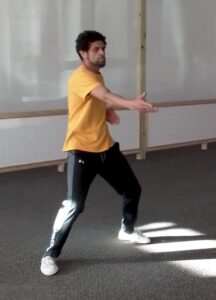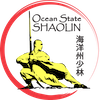“For the things we have to learn before we can do them, we learn by doing them.”
― The Nicomachean Ethics
― Scaramouche
So you’ve just started taking kungfu and qigong classes which are the perfect mix of fun, challenges (both mentally and physically) and camaraderie. There is a learning curve… steeper for some than others. The more proficient you become, the more you enjoy classes and the deeper you want to go. You know that the more frequently you attend, the faster you will improve. This is true, but if you really want to dramatically speed up your improvement, you should also practice on your own
Unfortunately, today’s life style can make developing a routine outside of class complicated.
Limited time. Some of us are just too busy to set aside a half hour for daily practice. Family duties and household chores take priority, as they should.
Difficulty Remembering Content. When learning something new, it can be difficult to recall what was learned in class. Therefore, to avoid practicing incorrectly, some choose to just not practice at all.
Modern distractions like TV shows, video games, social media and a busy social life are very seductive! While there is no reason to give these things up completely, these distractions will monopolize time that could be put towards self development. Balance is key.
Nowhere to practice. Many of us don’t have a suitable area at home for exercise. Your living space may be too small and you don’t have access to a nearby outdoor space, like a yard.
Low motivation. After a long, hard day at work, you may not be feeling very inspired. It’s easier to just pour yourself a glass of wine and relax with your favorite tv show.
There is good news, however. There are ways to overcome obstacles to home training by changing your idea of what “ideal” practice time is.
Think repetitions instead of time blocks.
Rather than trying to find a half hour in your day to exercise, become aware of moments
throughout the day when you can practice a few repetitions. Surely you can find two minutes in your typical day or find time to do a set of 10 repetitions. Start small and notice how quickly it went. Build up over time ands it becomes a new custom for you.
Mindset – Keep your self talk in check. Stop telling yourself that you don’t have time. This in itself is a diversion. Even if you can only practice for small bits at a time, it’s totally worth it. Be on the lookout for opportunities that you can drill for a minute or two. These opportunities exist, but we usually miss them. It’s not necessary to set up the perfect atmosphere by putting on music and lighting incense. Doing so will allow distractions to sneak in. Seize the moment!
Break it down You don’t have to practice an entire routine. Repeating simple movements allows you to build a solid vocabulary by improving your muscle memory. Learning the little things really well, will allow you to retain new things faster when you are participating in class. It reduces the chance that your attention will be diverted and allows you to apply laser focus to your practice.
Practice what you do remember
So you have a couple of minutes but completely forgot the form that you wanted to rehearse. Don’t sweat it. Just practice something else. It is never a waste of time to do drills that you already know or you think that you are already “good” at. You could always make it better – infuse more spirit, make it smoother, faster and more powerful.
Mental Practice
Take a few moments to visualize movements whenever you can. Rehearse with full spirit, intention and confidence. Although it is not a replacement for physical practice, visualization goes a long way to improving skills.
You don’t need a lot of space to drill Practice for technique rather than for power and speed. You may not have the right space for tornado kicks but you probably have space to practice squats and lunges which can improve your tornado kicks. Focus on stretching, balance training and technique.
- Waiting for your coffee to finish brewing in the morning? Practice your breath work. Start with five cycles of inhale and exhale. Increase over time.
- Waiting for dinner delivery? Practice pivoting. Developing proficiency with pivoting will improve your kicks, transition between stances, footwork and much more.
- TV show starts in a few minutes? Practice stance transition, horse stance to bow stance, 20 on each side.
What should you practice?
Make some notes after class. Is there a correction that you keep receiving? Tense shoulders, not pivoting while kicking? Forgetting to straighten the back leg when switching from horse stance to bow stance. Do you need more stability in your footwork? Do you have poor balance? Do you need to use your waist more?
Injury prevention. Are you feeling persistent pain or discomfort in your knees, ankles or shoulder? If so, you will need to do additional strengthening and/or stretching. You can target these issues at home. Think heel raises, wall sits, various squat styles, pushups, dips. Keep some dumbbells and resistance bands to assist in these exercises..
Make a plan of what to practice but allow yourself to be spontaneous. Keep practice simple but consistent. Address your specific needs whether it is better balance, more flexibility, more strength or better recall of routines. Just make sure that whatever you are doing, do it with focused attention and a strong spirit.
“Champions keep playing until they get it right.”
―
